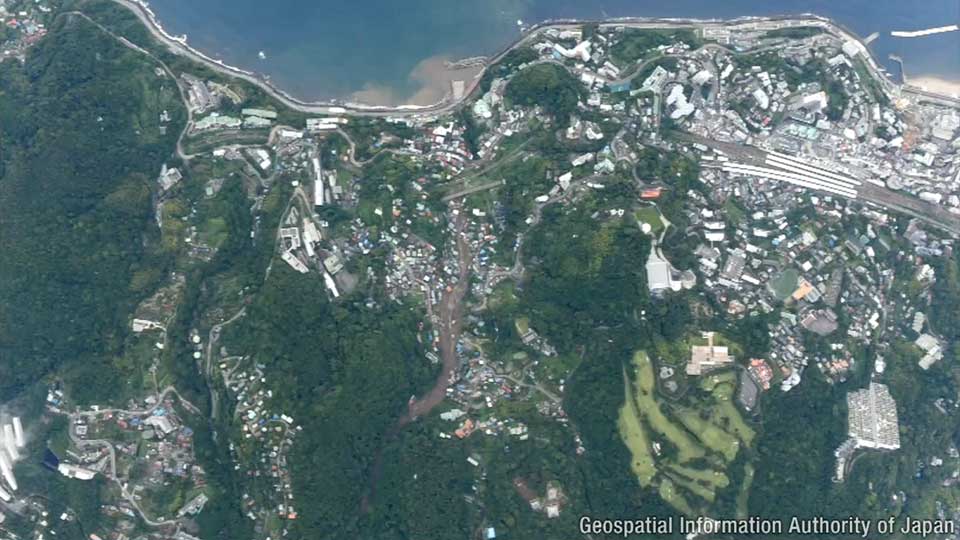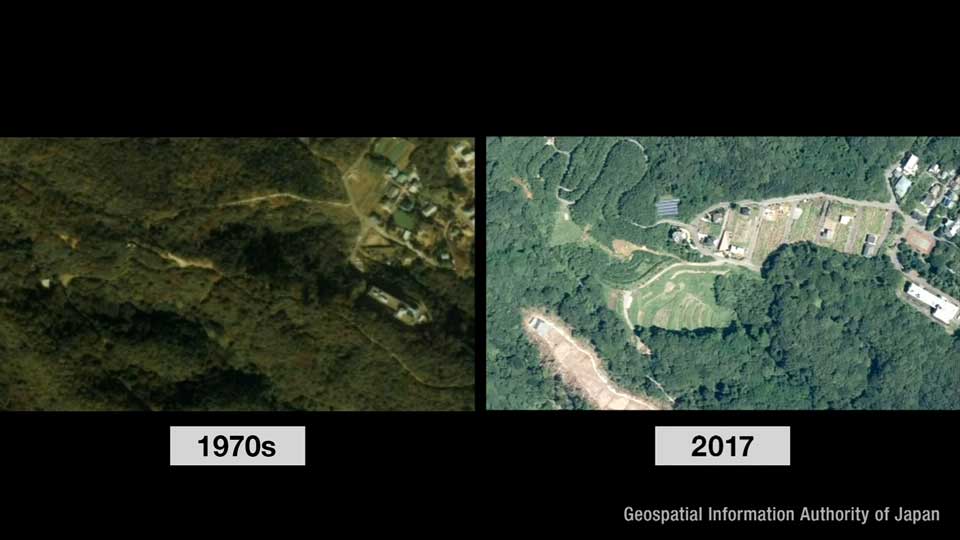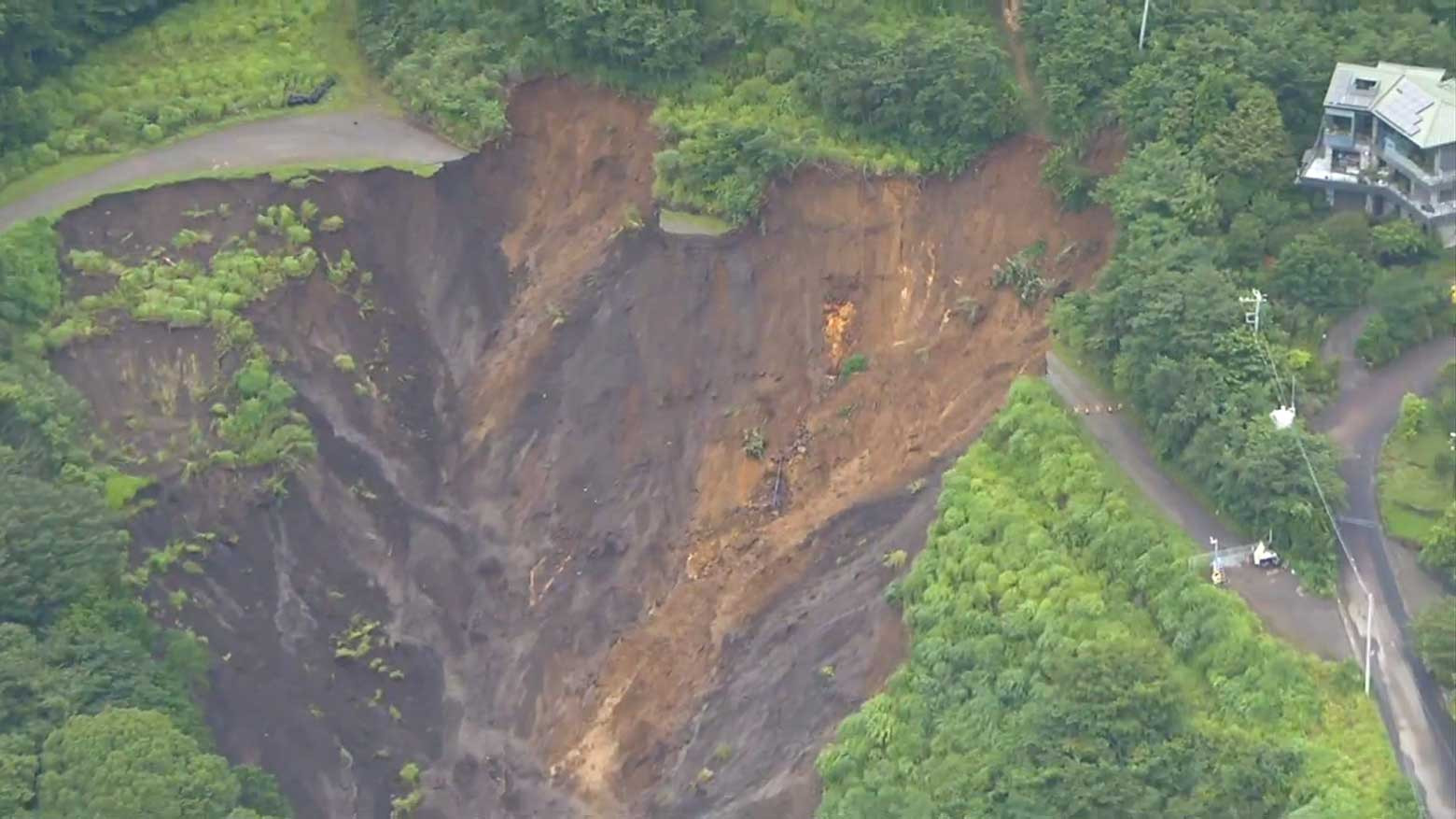An aerial photo shows the scale of the mudslides. The debris field was 160 meters wide and stretched about two kilometers to the coast.

Officials say at least 54,000 cubic meters had been used to fill a valley in roughly the area where the mudslide began. That accounts for about half the amount of mud that flowed down, racing over a concrete barricade that had been built upstream and smashing into the community below.
"We believe the soil was brought in as landfill. It collapsed and made the disaster even worse," said Shizuoka vice-governor Namba Takashi on Wednesday. He told reporters that in one area, the soil was piled up about 10 meters high. It also appeared to contain industrial waste. Namba vowed to investigate.

The land ministry says a company based in adjacent Kanagawa Prefecture submitted applications to Atami City in 2007 to fill in the steep valley.
A man who lives near the site says he watched the construction work taking place more than 10 years ago. "Large trucks were carrying in something like soil day after day," he said. "I worried about it."
Yamamoto Haruhiko of Yamaguchi University is an expert in landslides. He says the nature of the collapse warrants an investigation into possible links to the landfill.
"The soil brought in from elsewhere collapsed in a pattern that looks like the letter V," he says.
"We must study in detail how much soil had been dumped, on what scale and how the land was managed since then."
Yasuda Susumu of Tokyo Denki University is an expert on geotechnical engineering. He says that whenever a valley is filled with soil, systems need to be built to deal with water. "Workers need to drain groundwater by setting up pipes at the bottom. Authorities should look into whether any such measures were taken at all," he says.
Local authorities say the danger is not over yet, as the ground is unstable and further landslides are possible. They say they are monitoring the site around the clock and will compile measures within a month to prevent any recurrences at the site.

